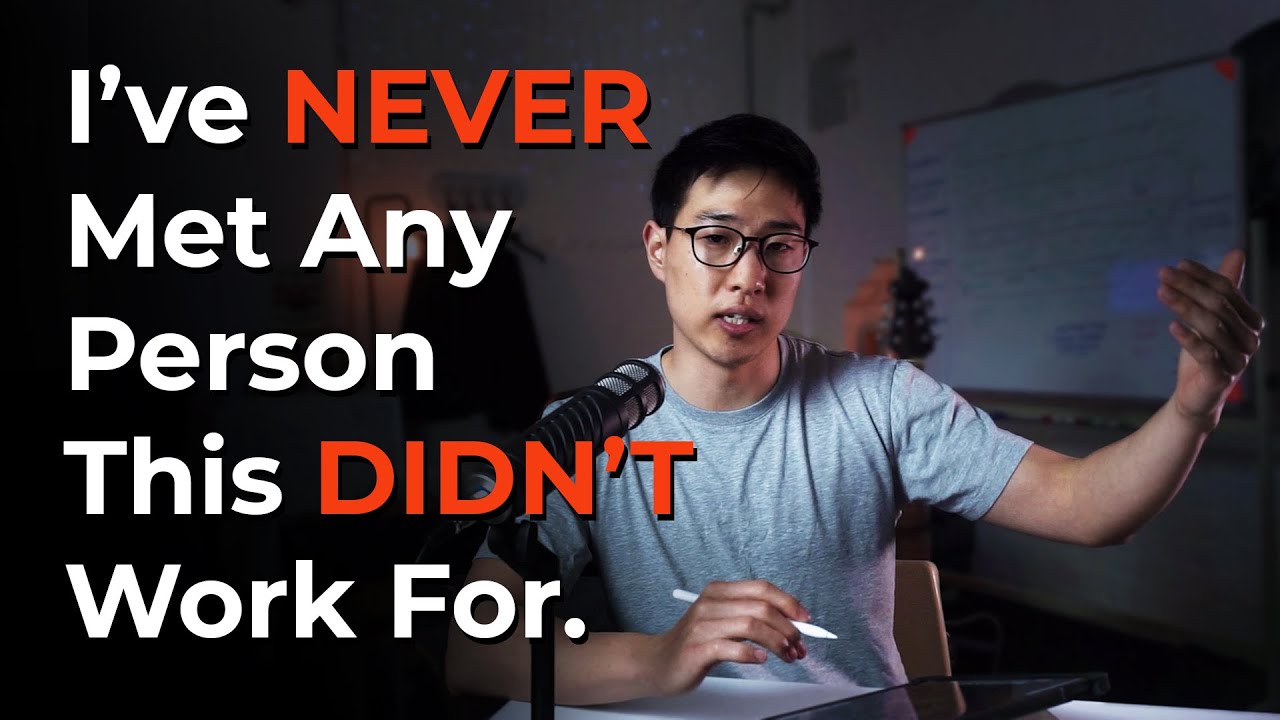How To STUDY Like AYANOKOJI KIYOTAKA (Science-Based)
Summary
TLDRThis video script introduces Ayanokoji Kotaka's five-step framework for academic success, emphasizing the importance of aligning study methods with exam formats. It advises against passive note-taking in class and suggests techniques for alertness, focus, and memory consolidation, such as deep breathing, staring exercises, and controlled stressors post-learning. The script also highlights the benefits of non-sleep deep rest for enhancing learning and preparing for future study sessions.
Takeaways
- 📚 Ayanokoji Kotaka's success is attributed to mastering the art of learning, not just a rigorous regimen.
- 🚫 Avoid using the same study methods for all exams; align strategies with the specific exam format.
- 📝 Stop taking notes in class to focus on comprehension; write notes afterward to reinforce memory and understanding.
- 🧠 To initiate neuroplasticity and become alert, take 25 to 30 deep breaths, holding breath after exhaling for 15 to 60 seconds.
- 👀 Use the 'this' technique to achieve unbreakable focus by staring at a single point for 30 to 60 seconds to minimize distractions.
- 🕒 Incorporate intervals of 'doing nothing' during learning to allow the brain to replay and consolidate information more effectively.
- 🏋️ Introduce a controlled stressor after learning, like caffeine or a cold shower, to spike adrenaline and enhance memory consolidation.
- 🧘 Practice non-sleep deep rest (NSDR) after studying to allow the brain to transition into a state of reduced arousal, aiding in learning depth and sleep quality.
- 🤔 Engage in activities like meditation, deep breathing, or progressive muscle relaxation as forms of NSDR to prepare for subsequent study sessions.
- 📈 The emotional state after learning experiences influences how quickly information is learned, highlighting the importance of positive reinforcement.
- 🔍 The script encourages community engagement by asking viewers to comment on their favorite and least favorite subjects.
Q & A
Who is Ayanokoji Kotaka and what is his secret to success?
-Ayanokoji Kotaka is described as a serial winner who excels in various fields such as academics, chess, and calligraphy. His success is attributed not to a brutal regimen but to a fundamental skill: he was taught the art of learning itself.
What are some common studying mistakes mentioned in the script that could hinder academic performance?
-The script mentions using the same study methods for all exams regardless of the exam format, and taking notes in class which can distract from fully comprehending the lecture.
Why is it suggested to align study strategies with the actual testing format?
-Aligning study strategies with the testing format ensures that the study methods are effective for the specific type of questions that will be encountered in the exam, thus improving the chances of academic success.
What is the recommended method for taking notes to improve comprehension and memory?
-The script suggests writing notes after class, which allows for better understanding of the lecture content and trains memory. It also recommends comparing notes with a classmate or using an audio recording for reference.
What is the five-step framework introduced in the script and how is it supposed to help with studying?
-The five-step framework is a method to improve study efficiency and grade performance. The steps involve becoming alert, focusing, doing nothing (allowing the brain to wander), introducing a controlled stressor post-learning, and engaging in non-sleep deep rest.
How can one increase alertness according to the script?
-The script suggests taking 25 to 30 deep breaths, inhaling through the nose and exhaling through the mouth, and holding the breath for 15 to 60 seconds to increase alertness and initiate neuroplasticity.
What is the 'back technique' for achieving unbreakable focus and how does it work?
-The 'back technique' involves staring at a single point in the room for 30 to 60 seconds, allowing natural blinking but minimizing thoughts and distractions. This aligns the cognitive process and improves concentration as mental focus follows visual focus.
Why is it beneficial to have intervals of doing nothing during the learning process?
-Intervals of doing nothing allow the brain to replay the activity patterns from the learning task at a faster rate, which helps in making novel connections and solutions that may not have been obvious during active learning.
How does introducing a controlled stressor after a learning session enhance memory consolidation?
-A spike in adrenaline post-learning acts as a marker that amplifies the brain's capacity for memory consolidation, enhancing the retention of newly acquired knowledge.
What is non-sleep deep rest (NSDR) and how does it affect learning?
-Non-sleep deep rest is a state of reduced arousal where the parasympathetic nervous system activity increases. It has a positive effect on the depth of learning and can be used as a preparatory phase for subsequent study sessions, helping to learn longer with available cognitive resources.
What are some examples of non-sleep deep rest activities mentioned in the script?
-Examples of non-sleep deep rest activities include meditation, deep breathing, progressive muscle relaxation, and following free protocols available on platforms like YouTube.
Outlines

Этот раздел доступен только подписчикам платных тарифов. Пожалуйста, перейдите на платный тариф для доступа.
Перейти на платный тарифMindmap

Этот раздел доступен только подписчикам платных тарифов. Пожалуйста, перейдите на платный тариф для доступа.
Перейти на платный тарифKeywords

Этот раздел доступен только подписчикам платных тарифов. Пожалуйста, перейдите на платный тариф для доступа.
Перейти на платный тарифHighlights

Этот раздел доступен только подписчикам платных тарифов. Пожалуйста, перейдите на платный тариф для доступа.
Перейти на платный тарифTranscripts

Этот раздел доступен только подписчикам платных тарифов. Пожалуйста, перейдите на платный тариф для доступа.
Перейти на платный тариф5.0 / 5 (0 votes)






